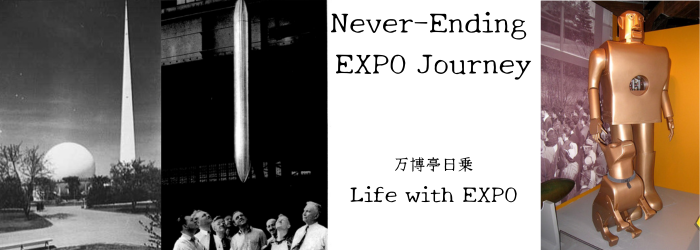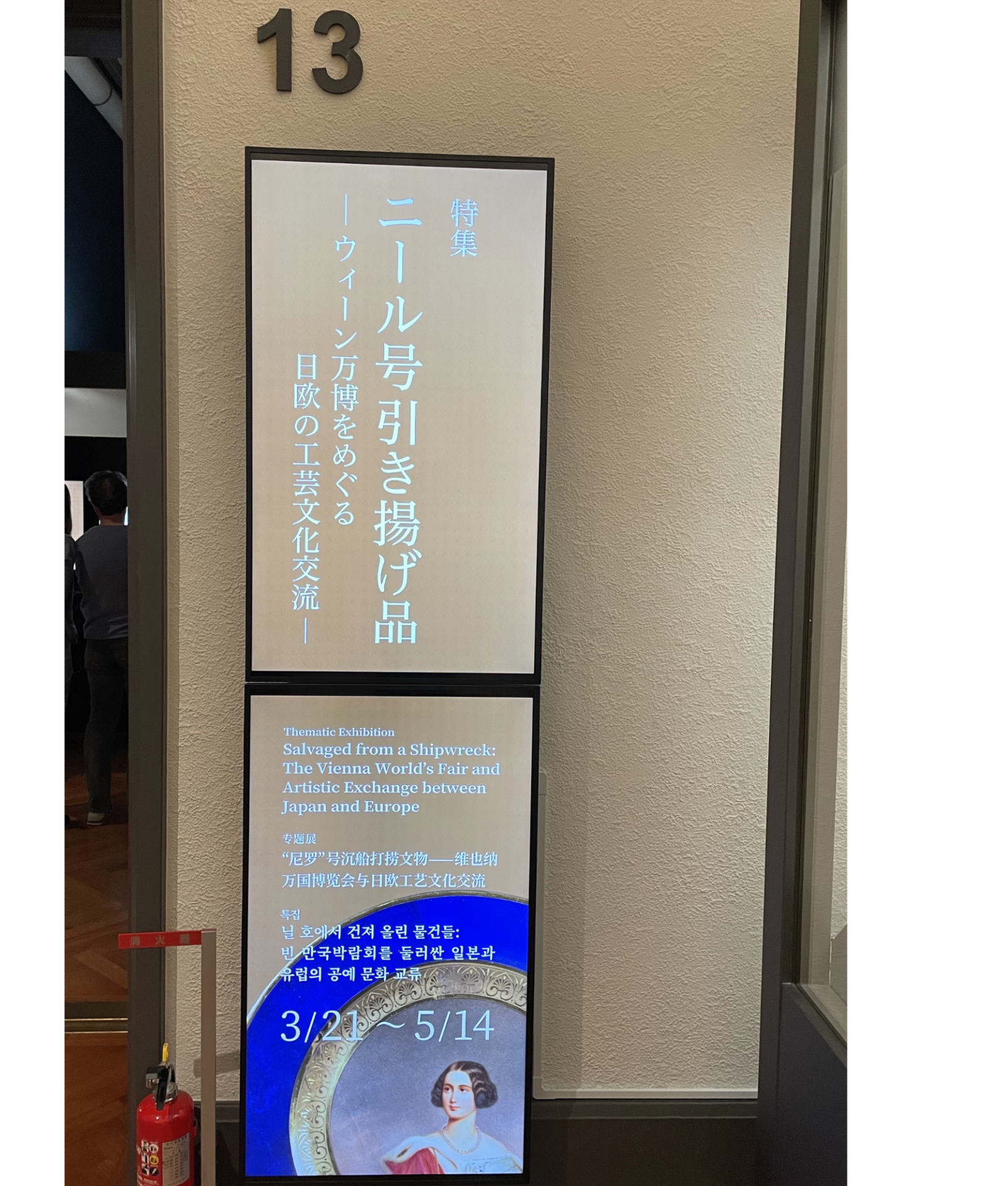Information about “Le Neil”. . .
The other day, I was reading some pamphlets, which I brought back from some museums, and among them was ‘Tohaku ‘(Tokyo National Museum)‘s “Tokyo National Museum News” No.772.
There was information about the special exhibition at “Tofuku-ji Temple” that I had already visited the other day, but on page 7, I found an article titled “Feature: Repatriated Items from the Neil: Japan-European Crafts and Culture Exchanges at the Vienna Expo“!
Room 14 in the main building, March 21st to May 14th. (Actually it was “Room 13”)
I checked it out on Tohaku’s website immediately.
Then I found the information. The following is an excerpt from HP.
*
This exhibition commemorates the 150th anniversary of the Vienna World’ s Fair in 1873. The fair was Japan’s first real opportunity to display its art and culture on a world stage. It was also an opportunity for Japan to study and acquire works of art, industrial samples, and documents in Europe.
But after the fair, a steamship carrying these resources, Le Neil (The Neil), sank on the way from Vienna to Japan. This exhibition features some of the objects salvaged from the Neil as well as related materials about the Vienna Wold’s Fair. Objects gifted to the Tokyo National Museum from overseas after the accident also shed light on the early days of the Museum’s international exchanges.
*
Hmmm, this looks very promising.
I decided to go visit the museum immediately.
Well, if you hear the word “the Neil” and immediately think “Ah!”, you must be a kind of Expo Geek (or World’s Fair Geek).
Before explaining “the Neil”, I should first explain a little more about the 1873 Vienna World’s Fair in Austria.
This year marks the 150th anniversary of the Vienna World Exposition of 1873.
This year, 2023, marks the 150th anniversary of the Vienna World Exposition of 1873.
The Vienna World Exposition was held from May 1 to October 31, 1973 in a 233-hectare venue on the banks of the Danube in Vienna, the Prater Park. The number of participating countries was 35, and the number of visitors is said to have been 7.26 million.
Cholera, Covid 19, and the Expo
This Expo was held in the midst of a cholera epidemic in the summer, and although 10 million visitors were expected, it ended up with 7.25 million visitors, resulting in a big loss. Recently, there were events such as the 2020 Dubai World Expo being postponed to 2021, a year later, due to the effects of Covid 19. In fact, the Expo has been affected by infectious diseases for 150 years.
On the other hand, taking this exposition as an opportunity, the medieval walls of the old city of Vienna, which had been fortresses, were demolished, and the existing ” Vienna Ring Road” was opened. As a result, it also left a positive result that we know even the present days. We found out that the famous ” Vienna Ring Road” and “Danube” were also related to the Expo.
Official participation in the Expo for the first time as the Meiji government
This Expo is also famous for being the first Expo in which the Meiji Government officially participated from Japan.
Shigenobu Okuma, the founder of Waseda University, was appointed as the president of the Japan Expo Secretariat, which was established in January 1872, and Tsunetami Sano was appointed as the vice president.
In 1867, only six years had passed since the Meiji government was established, the Japanese side decided to put on a very enthusiastic exhibition. At the same time, he also planned to dispatch about 70 Japanese people to the country and greedily bring back the technology and culture of other countries.
Wagner and Siebold also cooperated with the Japanese exhibition.
In 1872, the exhibits that were to be sent from Japan to Vienna were displayed in advance at the Yushima Seido in Tokyo, and after being toured by the Emperor and Empress, they were opened to the public.
The exhibits at that time included the Shachi of Nagoya Castle and the papier-mâché of the Great Buddha of Kamakura. The Japanese delegation headed for Vienna with two steamships full of exhibits, including national treasures.
Tragedy of “Le Neil”
After the Expo ended, the items that were brought from Japan and exhibited, as well as the crafts and industrial products that were collected locally, were brought back to Japan. First, it was transported from Austria to Hong Kong by ship, and then transferred to the French ship “the Neil” in Hong Kong and headed for Japan. However, “the Neil” sank off the coast of Mera on the Izu Peninsula. (By the way, the Shachi of Nagoya Castle was on another ship and was safe.)
The sunken the Neil was then salvaged, but only parts of its cargo items was found.
The items on display at the Tokyo National Museum this time are some of the salvaged items related to the Vienna Expo, and works donated from overseas in response to the Neil accident. be.
I immediately went to Tohaku.
In this exhibition, one room of the exhibition gallery is used to display these salvaged items. It’s not a large-scale exhibition by any means, it’s the scale of a gallery exhibition, but it’s quite an enjoyable one (am I the only one?).
The document titled “Items Purchased in Tokyo Prefecture” in the “Oukoku (Austria) Expo Exhibit Catalog”, the photo titled “Photo taken at the Vienna Exposition Exhibit”, were exhibited. And “Birdcages (Two types of tortoiseshell bird cages)” in that photo were on display.
In addition, as items brought from Japan, Kenzan Ogata‘s square plate and other works that have partially discolored in the sea are on display, and the tragedy of 150 years ago is still being conveyed.
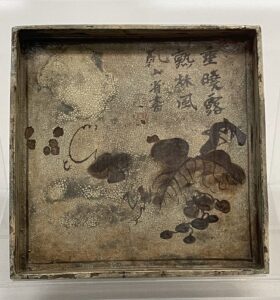
尾形乾山の角皿
‘Square Dish with Grapes’ by Ogata Kenzan
In addition, I was able to see an interesting uchiwa called “Schwarz-Senborn statue fan” who directed the Vienna World Exposition. This is quite interesting, and the face of the governor-general is drawn on the surface of the fan. On the back side, the view from the back of the governor-general’s head is drawn. Surprisingly, most of the back of the head is hollowed out, and inside it is a world map (representing the countries of the world gathered at the Expo) and a picture of the “Industrial Palace” which was the main venue of the Vienna World Exposition, on it. It probably shows that the governor-general’s head is full of expositions. The governor-general of the world exposition must be filled with the world exposition.
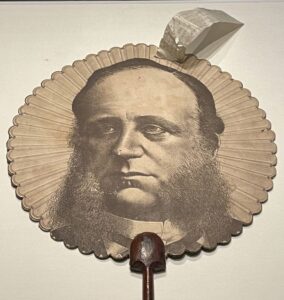
「シュヴァルツ=ゼンボーン総督像団扇」表面
‘Fan with a Portrait of the General Manager Schwarz-Senborn ‘ (front)
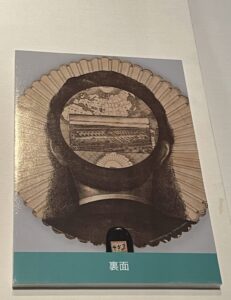
「シュヴァルツ=ゼンボーン総督像団扇」(裏面)
‘Fan with a Portrait of the General Manager Schwarz-Senborn ‘ (back)
There was also an exhibition of items that were later sent to Japan from England. The commentary on the wall said,
“In response to this sad news (author’s note: the sinking of the Neil), Philip Owen, who was the director of the South Kensington Museum (now the Victoria and Albert Museum) in England at the time, became the founder of the arts and crafts centered on England. The items were collected and sent to Japan. Industrial designer Christopher Dresser was involved in the selection of these donated items and transported them himself.”
Also on display were products from Wedgwood and Minton, plates made in Bavaria, Germany, and other valuable items salvaged from the sea.
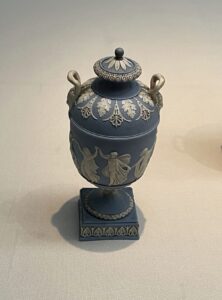
淡青地白彩花文双耳瓶
イギリス ウェッジウッド社 19世紀
‘Two-Handled Vase with Flowers’
by Wedgwood, United Kingdom 19th century
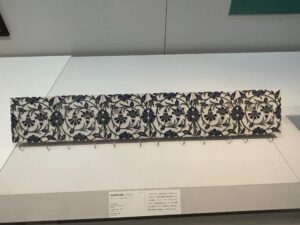
色絵唐草文陶版(タイル)
イギリス ミントン社 1871年
‘Tile with Vines’ by Minton & Co., United Kingdom
By the way, the South Kensington Museum in England (currently the Victoria and Albert Museum) was also a result of the London Expo, but let’s leave this topic for another occasion.
Other Expo-related Exhibits
In addition, although unrelated to the exhibition of “the Neil”, in the exhibition room next to it, the Chugoku and Shikoku regions of Tadataka Ino’s “Measured Map of Japan” was displayed. Tadataka Ino’s ” Map of Japan” is said to have been exhibited at the 2nd Paris International Exposition in 1867, so perhaps this work was taken to Paris.
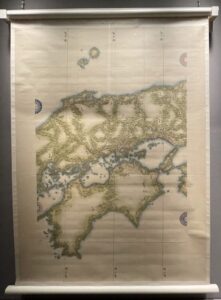
伊能忠敬『日本沿海與地図(中図)中国・四国』
‘Map of Japan (Medium-Sized Map)’ by Ino Tadataka
19th Century
Furthermore, in the exhibition room next to it, there were some crafts exhibited from Japan at the 1893 Chicago World’s Fair.
After all, ‘Tohaku’ is amazing.
The exhibition is on display at the main building of ‘Tohaku’ (the Tokyo National Museum) until May 14.
If you are interested in the Vienna Expo, why not take a look at it once?
